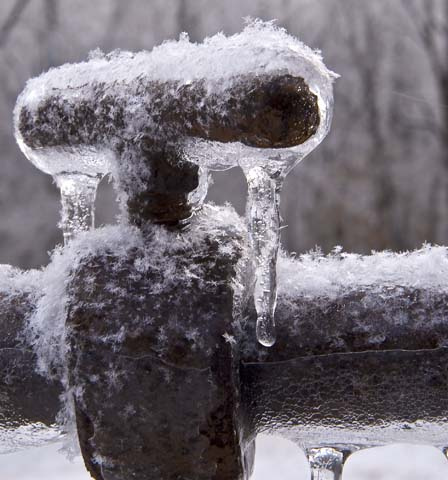Shielding Your Pipes from Freezing Issues: Critical Strategies
Shielding Your Pipes from Freezing Issues: Critical Strategies
Blog Article
What are your thoughts on Prevent Frozen Pipes ?

Winter can wreak havoc on your pipes, specifically by freezing pipelines. Here's exactly how to avoid it from occurring and what to do if it does.
Intro
As temperatures decline, the threat of icy pipelines rises, potentially resulting in pricey repair services and water damages. Recognizing just how to avoid frozen pipelines is crucial for house owners in cold environments.
Prevention Tips
Shielding prone pipelines
Cover pipelines in insulation sleeves or utilize warm tape to safeguard them from freezing temperatures. Concentrate on pipelines in unheated or external locations of the home.
Heating techniques
Keep interior areas properly heated up, especially locations with plumbing. Open up cabinet doors to enable cozy air to flow around pipelines under sinks.
Just how to identify frozen pipelines
Seek lowered water flow from faucets, unusual odors or sounds from pipelines, and noticeable frost on subjected pipelines.
Long-Term Solutions
Architectural changes
Take into consideration rerouting pipelines far from exterior walls or unheated areas. Add added insulation to attic rooms, basements, and crawl spaces.
Updating insulation
Buy high-quality insulation for pipes, attic rooms, and wall surfaces. Appropriate insulation aids preserve constant temperatures and minimizes the danger of frozen pipes.
Securing Exterior Plumbing
Yard tubes and outside faucets
Separate and drain garden tubes prior to winter season. Set up frost-proof faucets or cover outdoor taps with insulated caps.
Recognizing Icy Pipelines
What creates pipelines to ice up?
Pipelines ice up when exposed to temperatures listed below 32 ° F (0 ° C) for extended durations. As water inside the pipes freezes, it increases, putting pressure on the pipe walls and potentially causing them to burst.
Threats and problems
Icy pipes can lead to supply of water interruptions, building damage, and expensive repair services. Ruptured pipelines can flooding homes and trigger considerable architectural damage.
Indicators of Frozen Pipes
Identifying icy pipelines early can prevent them from rupturing.
What to Do If Your Pipes Freeze
Immediate activities to take
If you suspect frozen pipes, maintain faucets available to alleviate pressure as the ice thaws. Use a hairdryer or towels taken in hot water to thaw pipes slowly.
Final thought
Preventing icy pipelines needs positive steps and fast feedbacks. By comprehending the causes, signs, and preventive measures, homeowners can safeguard their pipes during winter.
5 Ways to Prevent Frozen Pipes
Drain Outdoor Faucets and Disconnect Hoses
First, close the shut-off valve that controls the flow of water in the pipe to your outdoor faucet. Then, head outside to disconnect and drain your hose and open the outdoor faucet to allow the water to completely drain out of the line. Turn off the faucet when done. Finally, head back to the shut-off valve and drain the remaining water inside the pipe into a bucket or container. Additionally, if you have a home irrigation system, you should consider hiring an expert to clear the system of water each year.
Insulate Pipes
One of the best and most cost-effective methods for preventing frozen water pipes is to wrap your pipes with insulation. This is especially important for areas in your home that aren’t exposed to heat, such as an attic. We suggest using foam sleeves, which can typically be found at your local hardware store.
Keep Heat Running at 65
Your pipes are located inside your walls, and the temperature there is much colder than the rest of the house. To prevent your pipes from freezing, The Insurance Information Institute suggests that you keep your home heated to at least 65 degrees, even when traveling. You may want to invest in smart devices that can keep an eye on the temperature in your home while you’re away.
Leave Water Dripping
Moving water — even a small trickle — can prevent ice from forming inside your pipes. When freezing temps are imminent, start a drip of water from all faucets that serve exposed pipes. Leaving a few faucets running will also help relieve pressure inside the pipes and help prevent a rupture if the water inside freezes.
Open Cupboard Doors
Warm your kitchen and bathroom pipes by opening cupboards and vanities. You should also leave your interior doors ajar to help warm air circulate evenly throughout your home.

I hope you liked our excerpt about 6 Ways to Prevent Frozen Pipes. Thank you for spending some time to browse our blog post. I beg you take a moment to share this write-up if you enjoyed it. I am grateful for being here. Return soon.
Call Today Report this page